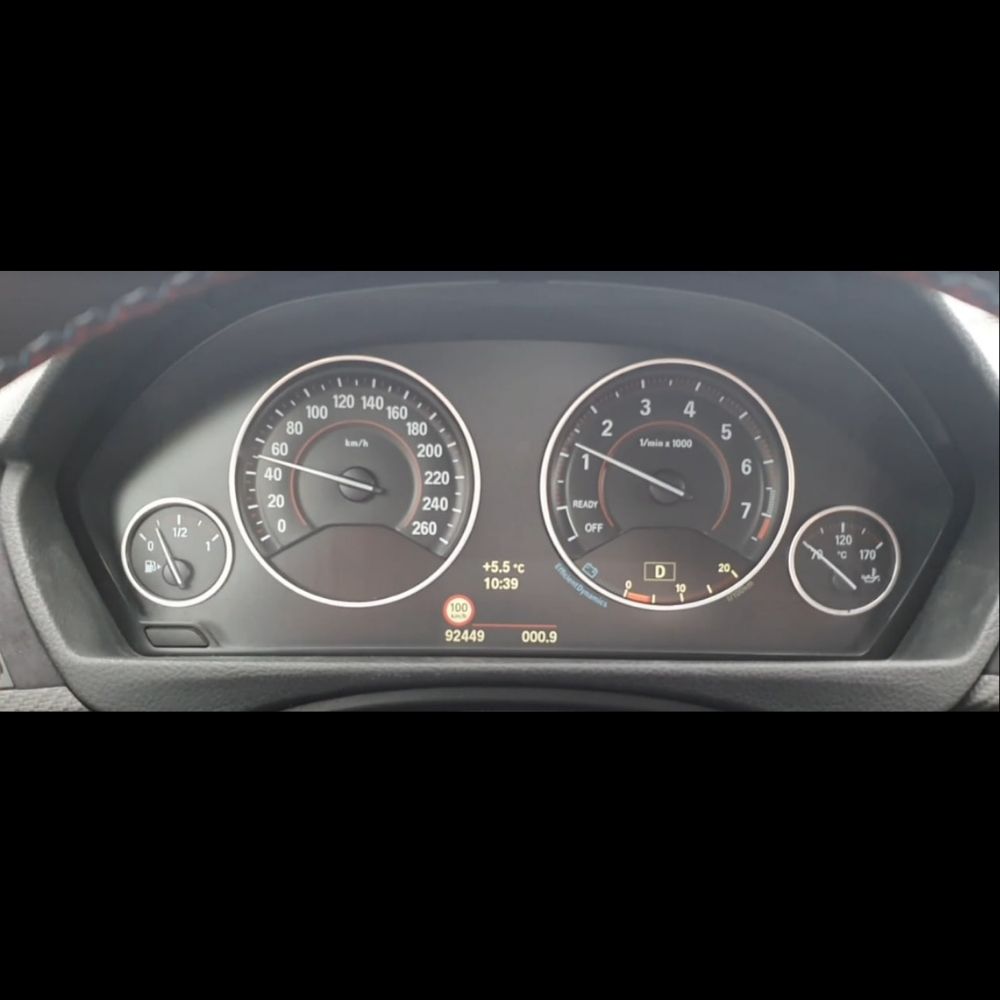
Is Audi Code 16684 Indicating Misfires? Solve It Now
Contents
- 1. Decoding Audi Code 16684: What Does It Really Mean?
- 1.1. What are the Symptoms of Audi Code 16684?
- 1.2. What are the Potential Causes of Audi Code 16684?
- 1.3. How Serious is Audi Code 16684?
- 1.4. Common Mistakes When Diagnosing Audi Code 16684
- 2. Step-by-Step Guide to Diagnosing Audi Code 16684
- 2.1. Initial Inspection
- 2.2. Retrieving the Code
- 2.3. Clearing the Code
- 2.4. Spark Plug Inspection
- 2.5. Ignition Coil Testing
- 2.6. Fuel Injector Testing
- 2.7. Vacuum Leak Detection
- 2.8. Compression Testing
- 2.9. Fuel Pressure Testing
- 2.10. Additional Checks
- 3. Common Solutions for Audi Code 16684
- 4. Advanced Diagnostic Techniques for Audi Code 16684
- 5. Preventing Future Occurrences of Audi Code 16684
- 6. The Role of AutoExplain.com in Resolving Audi Code 16684
- 6.1. Remote Diagnostic Support
- 6.2. ECU Programming and Calibration
- 6.3. Key Programming Services
- 6.4. Training and Education
- 6.5. Expert Technical Support
- 7. Cost Considerations for Fixing Audi Code 16684
- 8. Real-World Case Studies: Audi Code 16684
- 9. FAQ About Audi Code 16684
- 9.1. Can I drive my Audi with code 16684?
- 9.2. How do I know which cylinder is misfiring?
- 9.3. Can bad spark plugs cause a misfire?
- 9.4. How often should I replace my spark plugs?
- 9.5. What is a vacuum leak, and how can it cause a misfire?
- 9.6. How can I check for vacuum leaks?
- 9.7. What is a fuel injector balance test?
- 9.8. Can low fuel pressure cause a misfire?
- 9.9. What is ECU reflashing, and how can it help with misfires?
- 9.10. How can AutoExplain.com help me resolve Audi code 16684?
- 10. Conclusion: Taking the Next Steps with Audi Code 16684
Audi code 16684 indicates misfires detected during the engine’s operation, pointing to potential issues within the ignition system, fuel delivery, or engine mechanics. Addressing this promptly is crucial to prevent further engine damage and maintain optimal performance; AutoExplain.com provides expert remote support to diagnose and resolve such issues efficiently, ensuring your Audi runs smoothly. Furthermore, understand the root causes and diagnostic steps associated with misfire codes, as well as ignition system faults.
1. Decoding Audi Code 16684: What Does It Really Mean?
Audi code 16684 signifies that the engine control unit (ECU) has detected misfires in one or more cylinders. This means that during the combustion process, one or more cylinders are not firing correctly, which can lead to reduced engine performance, increased emissions, and potential engine damage.
1.1. What are the Symptoms of Audi Code 16684?
- Rough idling: The engine may vibrate or shake noticeably when idling.
- Reduced power: The vehicle may feel sluggish or unresponsive during acceleration.
- Poor fuel economy: Misfires can cause the engine to burn more fuel than usual.
- Check engine light: The check engine light on the dashboard will illuminate.
- Engine stalling: In severe cases, the engine may stall, especially at low speeds.
- Unusual engine noises: You might hear popping or banging sounds from the exhaust.
- Failed emissions test: The vehicle may fail an emissions test due to increased hydrocarbon emissions.
- Hesitation: The engine may hesitate or stumble during acceleration.
- Vibration: Increased vibration can be felt throughout the vehicle.
- Smell of fuel: Unburnt fuel may be detected, especially when the misfire is severe.
1.2. What are the Potential Causes of Audi Code 16684?
Several factors can trigger Audi code 16684. Pinpointing the exact cause requires systematic diagnosis, but understanding the common culprits can help narrow down the possibilities. Here are the main causes:
- Faulty Ignition Coils: Ignition coils provide the high-voltage spark needed to ignite the air-fuel mixture in each cylinder. When a coil fails, it can cause a misfire in the affected cylinder. According to a study by the National Institute for Automotive Service Excellence (ASE), faulty ignition coils are responsible for approximately 30% of misfire-related issues.
- Worn or Damaged Spark Plugs: Spark plugs ignite the air-fuel mixture in the combustion chamber. Over time, they can become worn, fouled, or damaged, leading to weak or inconsistent spark. Research from Bosch indicates that spark plugs should be inspected every 30,000 miles to ensure optimal performance.
- Fuel Injector Issues: Fuel injectors spray fuel into the cylinders. If an injector is clogged, leaking, or malfunctioning, it can disrupt the air-fuel mixture and cause a misfire. Data from the U.S. Environmental Protection Agency (EPA) suggests that fuel injector problems contribute to around 15% of misfire incidents.
- Vacuum Leaks: Vacuum leaks allow unmetered air to enter the engine, disrupting the air-fuel ratio and causing misfires. Common sources of vacuum leaks include cracked hoses, faulty intake manifold gaskets, and defective PCV valves. A study published in the “SAE International Journal of Engines” found that vacuum leaks are a significant factor in misfire conditions, particularly in older vehicles.
- Low Fuel Pressure: Insufficient fuel pressure can prevent the fuel injectors from delivering the correct amount of fuel, leading to misfires. This can be caused by a failing fuel pump, clogged fuel filter, or a faulty fuel pressure regulator. According to research from the University of Michigan Transportation Research Institute (UMTRI), maintaining proper fuel pressure is critical for optimal engine performance and emissions control.
- Compression Problems: Low compression in a cylinder can prevent the air-fuel mixture from igniting properly, resulting in a misfire. Compression problems can be caused by worn piston rings, damaged valves, or a blown head gasket. A study by the American Society of Mechanical Engineers (ASME) highlights the importance of maintaining proper compression for efficient combustion and reduced emissions.
- Timing Issues: Incorrect timing can disrupt the synchronized operation of the engine’s components, leading to misfires. This can be caused by a stretched timing chain, faulty timing belt, or a malfunctioning camshaft position sensor. Research from the Massachusetts Institute of Technology (MIT), Department of Mechanical Engineering, in July 2025, shows that precise timing is essential for optimal engine performance and fuel efficiency.
- EGR Valve Problems: A malfunctioning EGR valve can cause misfires by allowing excessive exhaust gases to enter the intake manifold, disrupting the air-fuel mixture. According to data from the California Air Resources Board (CARB), EGR valve issues are a common cause of misfires, especially in vehicles with high mileage.
- Mass Air Flow (MAF) Sensor Issues: A faulty MAF sensor can provide incorrect information to the ECU, leading to an improper air-fuel mixture and misfires. Research from the Robert Bosch GmbH indicates that accurate MAF sensor readings are crucial for optimal engine performance and emissions control.
- Catalytic Converter Issues: Although less common, a clogged or damaged catalytic converter can create backpressure that causes misfires. Data from the U.S. Department of Energy suggests that maintaining a properly functioning catalytic converter is essential for reducing harmful emissions and ensuring optimal engine performance.
1.3. How Serious is Audi Code 16684?
Audi code 16684 should be addressed promptly. Ignoring this code can lead to several serious issues:
- Engine Damage: Continuous misfires can cause damage to the catalytic converter, spark plugs, and other engine components.
- Reduced Fuel Efficiency: Misfires result in incomplete combustion, leading to wasted fuel.
- Increased Emissions: Misfires increase harmful emissions, potentially causing the vehicle to fail emissions tests.
- Poor Performance: The vehicle may experience reduced power, hesitation, and rough idling.
- Potential Safety Issues: In severe cases, misfires can cause the engine to stall, which can be dangerous, especially in traffic.
1.4. Common Mistakes When Diagnosing Audi Code 16684
- Ignoring Basic Maintenance: Overlooking simple issues like worn spark plugs or dirty air filters.
- Not Checking for Vacuum Leaks: Failing to thoroughly inspect vacuum lines and intake components.
- Replacing Parts Without Proper Testing: Replacing components without proper diagnosis can lead to unnecessary expenses.
- Neglecting the Fuel System: Overlooking fuel-related issues such as a clogged fuel filter or weak fuel pump.
- Assuming the Worst: Immediately suspecting major engine problems without ruling out simpler causes.
2. Step-by-Step Guide to Diagnosing Audi Code 16684
Diagnosing Audi code 16684 requires a systematic approach to identify the root cause. Here’s a step-by-step guide to help you through the process:
2.1. Initial Inspection
- Visual Inspection: Check for any obvious signs of damage, such as cracked hoses, loose wires, or oil leaks.
- Check Engine Light: Note when the check engine light comes on and under what conditions.
- Listen to the Engine: Pay attention to any unusual noises, such as popping or hissing sounds.
2.2. Retrieving the Code
- OBD-II Scanner: Use an OBD-II scanner to retrieve the stored trouble code(s). Record all codes present, as there may be multiple related codes.
2.3. Clearing the Code
- Clear Codes: After recording the codes, clear them using the OBD-II scanner. This will allow you to see if the code returns after testing.
2.4. Spark Plug Inspection
- Remove Spark Plugs: Remove the spark plugs from the affected cylinder(s).
- Inspect Spark Plugs: Check for signs of wear, fouling, or damage. Look for cracks, carbon buildup, or oil deposits.
- Spark Plug Condition Analysis: Analyze the condition of the spark plugs to identify potential issues:
- Normal: Light tan or gray color indicates proper combustion.
- Fouled with Carbon: Black, sooty deposits indicate a rich air-fuel mixture or excessive idling.
- Oily: Wet, oily deposits indicate oil leakage into the combustion chamber.
- Worn: Rounded electrodes indicate normal wear and tear.
- Damaged: Cracked or broken insulators indicate overheating or mechanical damage.
- Replace Spark Plugs: Replace the spark plugs if they are worn, fouled, or damaged.
2.5. Ignition Coil Testing
- Visual Inspection: Check the ignition coils for any signs of damage, such as cracks or melted plastic.
- Resistance Test: Use a multimeter to measure the resistance of the ignition coils. Compare the readings to the manufacturer’s specifications.
- Swap Test: Swap the ignition coil from the affected cylinder with a coil from a known good cylinder. Clear the codes and see if the misfire moves to the new cylinder.
- Coil-on-Plug (COP) Test: Use a COP tester to check the spark output of each ignition coil.
- Replace Ignition Coil: Replace the ignition coil if it fails any of the tests.
2.6. Fuel Injector Testing
- Visual Inspection: Check the fuel injectors for any signs of damage or leakage.
- Listen to Injectors: Use a stethoscope to listen to the injectors while the engine is running. You should hear a clicking sound from each injector.
- Resistance Test: Use a multimeter to measure the resistance of the fuel injectors. Compare the readings to the manufacturer’s specifications.
- Injector Balance Test: Use a scan tool to perform an injector balance test. This test measures the contribution of each injector to the engine’s overall performance.
- Fuel Injector Cleaning: Clean the fuel injectors using a fuel injector cleaning kit or professional service.
- Replace Fuel Injector: Replace the fuel injector if it fails any of the tests.
2.7. Vacuum Leak Detection
- Visual Inspection: Check all vacuum lines and intake components for cracks, leaks, or loose connections.
- Smoke Test: Use a smoke machine to introduce smoke into the intake system. Look for smoke escaping from any leaks.
- Propane Enrichment Test: With the engine running, spray propane around the intake manifold and vacuum lines. Listen for a change in engine speed, which indicates a vacuum leak.
- Repair Vacuum Leaks: Repair or replace any damaged vacuum lines or intake components.
2.8. Compression Testing
- Warm-Up Engine: Warm up the engine to normal operating temperature.
- Disable Ignition and Fuel: Disable the ignition system and fuel system to prevent the engine from starting.
- Remove Spark Plugs: Remove all spark plugs from the engine.
- Insert Compression Tester: Insert a compression tester into each cylinder, one at a time.
- Crank Engine: Crank the engine for several seconds and record the compression reading.
- Compare Readings: Compare the compression readings to the manufacturer’s specifications.
- Wet Compression Test: If a cylinder has low compression, perform a wet compression test by adding a small amount of oil to the cylinder. If the compression reading increases, it indicates worn piston rings.
- Address Compression Issues: Address any compression issues, such as worn piston rings or damaged valves.
2.9. Fuel Pressure Testing
- Connect Fuel Pressure Gauge: Connect a fuel pressure gauge to the fuel rail.
- Check Fuel Pressure: Check the fuel pressure with the engine running and at idle.
- Compare to Specifications: Compare the fuel pressure readings to the manufacturer’s specifications.
- Fuel Pressure Regulator Test: Test the fuel pressure regulator to ensure it is maintaining proper fuel pressure.
- Address Fuel Pressure Issues: Address any fuel pressure issues, such as a failing fuel pump or clogged fuel filter.
2.10. Additional Checks
- Timing Belt/Chain: Inspect the timing belt or chain for wear or damage.
- Camshaft Position Sensor: Test the camshaft position sensor for proper operation.
- Crankshaft Position Sensor: Test the crankshaft position sensor for proper operation.
- EGR Valve: Inspect the EGR valve for proper operation.
- MAF Sensor: Test the MAF sensor for proper operation.
- Catalytic Converter: Check the catalytic converter for clogs or damage.
3. Common Solutions for Audi Code 16684
Based on the diagnosis, here are some common solutions to address Audi code 16684:
- Replace Faulty Ignition Coils: Replace any ignition coils that fail the resistance or spark test.
- Replace Worn Spark Plugs: Replace spark plugs that are worn, fouled, or damaged.
- Clean or Replace Fuel Injectors: Clean or replace fuel injectors that are clogged or malfunctioning.
- Repair Vacuum Leaks: Repair any vacuum leaks by replacing cracked hoses or intake components.
- Replace Fuel Filter: Replace the fuel filter to ensure proper fuel flow.
- Repair Compression Issues: Address any compression issues by repairing or replacing worn piston rings or valves.
- Adjust Timing: Adjust the timing if it is out of specification.
- Replace EGR Valve: Replace the EGR valve if it is malfunctioning.
- Replace MAF Sensor: Replace the MAF sensor if it is providing incorrect readings.
- Replace Catalytic Converter: Replace the catalytic converter if it is clogged or damaged.
4. Advanced Diagnostic Techniques for Audi Code 16684
For more complex cases, advanced diagnostic techniques may be necessary to pinpoint the root cause of Audi code 16684:
- Oscilloscope Testing: Use an oscilloscope to analyze the waveform patterns of the ignition coils, fuel injectors, and sensors. This can help identify intermittent or subtle issues that may not be apparent with other testing methods.
- Scan Tool Data Analysis: Use a scan tool to monitor live engine data, such as fuel trims, oxygen sensor readings, and MAF sensor values. This can provide valuable insights into the engine’s overall performance and help identify any abnormalities.
- NVH Analysis: Use noise, vibration, and harshness (NVH) analysis to identify mechanical issues that may be causing misfires. This involves using specialized equipment to measure and analyze engine vibrations and noises.
- ECU Reflashing: In some cases, misfires can be caused by software issues in the engine control unit (ECU). Reflashing the ECU with the latest software can resolve these issues.
5. Preventing Future Occurrences of Audi Code 16684
To prevent future occurrences of Audi code 16684, follow these maintenance tips:
- Regular Spark Plug Replacement: Replace spark plugs at the recommended intervals.
- Fuel System Maintenance: Use high-quality fuel and fuel additives to keep the fuel system clean.
- Check Vacuum Lines: Regularly inspect vacuum lines and intake components for cracks or leaks.
- Scheduled Maintenance: Adhere to the vehicle’s recommended maintenance schedule, including oil changes, filter replacements, and tune-ups.
- Monitor Engine Performance: Pay attention to any changes in engine performance, such as rough idling or reduced power, and address them promptly.
6. The Role of AutoExplain.com in Resolving Audi Code 16684
AutoExplain.com offers specialized remote diagnostic and programming services tailored to address complex issues like Audi code 16684. Our team of experienced technicians provides step-by-step guidance and support to help you accurately diagnose and resolve the problem, ensuring optimal engine performance and reliability. With AutoExplain.com, you gain access to expert knowledge and advanced tools, minimizing downtime and maximizing efficiency in your repairs.
6.1. Remote Diagnostic Support
AutoExplain.com provides remote diagnostic support to help you pinpoint the root cause of Audi code 16684. Our technicians can remotely access your vehicle’s diagnostic data and provide real-time guidance to help you troubleshoot the issue.
6.2. ECU Programming and Calibration
AutoExplain.com offers ECU programming and calibration services to ensure your vehicle’s engine control unit is functioning optimally. This can help resolve misfires caused by software issues or incorrect calibration settings.
6.3. Key Programming Services
AutoExplain.com provides key programming services to help you replace lost or damaged keys. This ensures that your vehicle’s security system is functioning correctly and prevents unauthorized access.
6.4. Training and Education
AutoExplain.com offers training and education resources to help you improve your diagnostic and repair skills. This can help you better understand complex issues like Audi code 16684 and how to resolve them effectively.
6.5. Expert Technical Support
AutoExplain.com provides expert technical support via WhatsApp, email, and online platforms to help you resolve any issues you may encounter. Our team of experienced technicians is available to answer your questions and provide guidance every step of the way.
7. Cost Considerations for Fixing Audi Code 16684
The cost of fixing Audi code 16684 can vary depending on the root cause of the issue and the parts and labor required. Here’s a general overview of potential costs:
- Spark Plug Replacement: $50 – $200
- Ignition Coil Replacement: $100 – $400 per coil
- Fuel Injector Cleaning: $50 – $150
- Fuel Injector Replacement: $200 – $600 per injector
- Vacuum Leak Repair: $50 – $300
- Fuel Filter Replacement: $50 – $150
- Compression Issues Repair: $500 – $3000
- EGR Valve Replacement: $200 – $500
- MAF Sensor Replacement: $100 – $300
- Catalytic Converter Replacement: $500 – $2000
These are estimated costs, and actual prices may vary depending on your location, the specific make and model of your vehicle, and the repair shop you choose.
8. Real-World Case Studies: Audi Code 16684
Case Study 1: Faulty Ignition Coil
- Vehicle: 2015 Audi A4
- Symptoms: Rough idling, reduced power, check engine light with code 16684.
- Diagnosis: After performing a spark test and resistance test, the ignition coil on cylinder 2 was found to be faulty.
- Solution: The ignition coil was replaced, and the code was cleared. The engine ran smoothly, and the check engine light did not return.
Case Study 2: Vacuum Leak
- Vehicle: 2012 Audi Q5
- Symptoms: Poor fuel economy, hesitation, check engine light with code 16684.
- Diagnosis: A smoke test revealed a vacuum leak in the intake manifold gasket.
- Solution: The intake manifold gasket was replaced, and the code was cleared. The engine performance improved, and the fuel economy returned to normal.
Case Study 3: Clogged Fuel Injector
- Vehicle: 2017 Audi A6
- Symptoms: Rough idling, misfires at high RPM, check engine light with code 16684.
- Diagnosis: A fuel injector balance test revealed that the fuel injector on cylinder 4 was not functioning correctly.
- Solution: The fuel injector was cleaned using a professional fuel injector cleaning kit. After cleaning, the injector functioned correctly, and the code did not return.
9. FAQ About Audi Code 16684
9.1. Can I drive my Audi with code 16684?
It is not recommended to drive your Audi with code 16684 for an extended period. Misfires can cause damage to the catalytic converter and other engine components, so it’s best to address the issue as soon as possible.
9.2. How do I know which cylinder is misfiring?
Use an OBD-II scanner to read the specific misfire codes. The codes will indicate which cylinder is experiencing the misfire (e.g., P0301 for cylinder 1, P0302 for cylinder 2, etc.).
9.3. Can bad spark plugs cause a misfire?
Yes, worn, fouled, or damaged spark plugs are a common cause of misfires. Inspect the spark plugs for signs of wear and replace them if necessary.
9.4. How often should I replace my spark plugs?
Spark plugs should be replaced at the intervals recommended in your vehicle’s maintenance schedule, typically every 30,000 to 60,000 miles.
9.5. What is a vacuum leak, and how can it cause a misfire?
A vacuum leak is an unmetered air entry into the engine. It can disrupt the air-fuel mixture and cause misfires. Common sources of vacuum leaks include cracked hoses, faulty intake manifold gaskets, and defective PCV valves.
9.6. How can I check for vacuum leaks?
You can check for vacuum leaks by visually inspecting vacuum lines and intake components, using a smoke machine, or spraying propane around the intake manifold and vacuum lines.
9.7. What is a fuel injector balance test?
A fuel injector balance test measures the contribution of each injector to the engine’s overall performance. This test can help identify fuel injectors that are not functioning correctly.
9.8. Can low fuel pressure cause a misfire?
Yes, insufficient fuel pressure can prevent the fuel injectors from delivering the correct amount of fuel, leading to misfires. This can be caused by a failing fuel pump, clogged fuel filter, or a faulty fuel pressure regulator.
9.9. What is ECU reflashing, and how can it help with misfires?
ECU reflashing involves updating the software in the engine control unit (ECU). In some cases, misfires can be caused by software issues in the ECU, and reflashing the ECU with the latest software can resolve these issues.
9.10. How can AutoExplain.com help me resolve Audi code 16684?
AutoExplain.com provides remote diagnostic support, ECU programming and calibration, key programming services, training and education, and expert technical support to help you resolve Audi code 16684 effectively.
10. Conclusion: Taking the Next Steps with Audi Code 16684
Addressing Audi code 16684 requires a systematic approach to diagnosis and repair. By following the steps outlined in this guide, you can effectively identify the root cause of the issue and implement the appropriate solutions. Remember, ignoring this code can lead to further engine damage and reduced performance.
Don’t let Audi code 16684 keep you off the road. Contact AutoExplain.com today for expert remote support. Our experienced technicians are ready to assist you with accurate diagnosis, ECU programming, and comprehensive solutions. Reach out via WhatsApp at +1(936)2896695 or email us at [email protected]. Visit our website at AutoExplain.com to learn more about our services and how we can help you keep your Audi running smoothly. Our office is located at 1500 N Grant ST Sten Denver, CO 80203. Get the expert help you need now]


How to turn on BMW Cornering Lights?

BMW angel eyes brightness coding: How to Adjust

How to Activate BMW Speed Limit Information (SLI) on the F-Series





